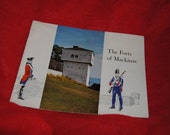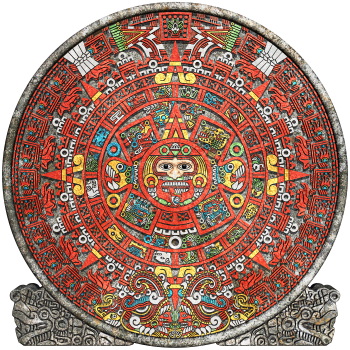So here we go for another day, haven’t been doing much but reading, and working since my sojourn in Lake Mary http://www.tripadvisor.com/Attractions-g34366-Activities-Lake_Mary_Florida.html this weekend and am beginning to get stir crazy. I know I’m the one who preaches getting out more so I am breaking all my rules but I’ll try to do better in the future. Honorable mention goes to Heron Cay one of the most beautiful Bed and Breakfast ever: www.heroncay.com on the lake just beyond downtown Mt. Dora http://www.mountdora.com/ on West Old HWY US 441
and while we’re on the subject of time—which is what we’re doing today….how about my favorite time traveler show—not time traveler as #JamieFraser never (at least in the first 6 1/4 books) time travels though a whole lot of his family does. Check out his fund raiser—or should I say #SamHeughan’s. http://www.dailyrecord.co.uk/entertainment/star-hit-time-travel-show-6347226


TIME TIME TIME…..AND ONTO THE BEGINNING AND BEYOND THE END TODAY

Our concept of time has varied greatly over the centuries. As we saw yesterday the Romans had calendars and months, days etc. Amazingly this goes back many more years than until just recently than we had actually thought it did. In 2013 at “an archaeological site in northern Scotland – a row of ancient pits which archaeologists believe is the world’s oldest calendar. It is almost five thousand years older than its nearest rival …Created by Stone Age Britons some 10,000 years ago, archaeologists believe that the complex of pits was designed to represent the months of the year and the lunar phases of the month. They believe it also allowed the observation of the mid-winter sunrise – in effect the birth of the new year – so that the lunar calendar could be annually re-calibrated to bring it back into line with the solar year.” http://www.independent.co.uk/news/science/archaeology/news/found-after-10000-years-the-worlds-first-calendar-8708322.html
The month is a well adjusted length of time for recalling fairly recent events, and it has a magic significance through its loose link with the female menstrual period. http://www.historyworld.net/wrldhis/PlainTextHistories.asp?historyid=ac06#ixzz3lFuY4jQ1
Here are a few months–interestingly enough the Romans seem to have been the shaper of time lines much more than you may have realized:
January — Janus’s month Janus is the Roman god of gates and doorways, depicted with two faces looking in opposite directions. His festival month is January. Januarius had 29 days, until Julius when it became 31 days long
February — month of Februa Februarius had 28 days, until circa 450 BC when it had 23 or 24 days on some of every second year, until Julius when it had 29 days on every fourth year and 28 days otherwise. Februa is the Roman festival of purification, held on February fifteenth. It is possibly of Sabine origin.
March — Mars’ month Martius has always had 31 days. March was the original beginning of the year, and the time for the resumption of war. Mars is the Roman god of war.
April — Aphrodite’s month—Aprilis had 30 days, until Numa when it had 29 days, until Julius when it became 30 days long. Aphrodite is the Greek goddess of love and beauty. She is identified with the Roman goddess Venus. WHILE APRIL WAS STILL A ROMAN INVENTION IT IS INTERESTING THAT SHE IS NAMED FOR A GREEK GODDESS.
To check out your month click here: http://www.crowl.org/lawrence/time/months.html
A far more important slice of time is
the year, a full circuit of the earth round the sun – crucial in human activities because of its influence on seasons and crops. But the length of a year is exceptionally hard to measure. Primitive societies make do with a broad concept, counting the year as starting when leaves sprout on a particular tree or describing someone as having lived through a certain number of harvests.
http://www.historyworld.net/wrldhis/PlainTextHistories.asp?historyid=ac06#ixzz3lFvCRUcnAncients marked their year with festivals and ceremonies—They built New Grange with each year the deepest chamber is lighted at the Solstice and they celebrated their new year at the winter Solstice in December by ceremonial activity to bring the sun back from its journey and the earth escapes once again eternal darkness and death.
The
Romans often cited events from the traditional foundation of their city
ab urbe conditâ, or A.U.C., said to be 753 BCE (although later they used years A.D. that is, after the
emperor Diocletian, ruled 284-305 CE). During the
Republic, they also cited years using the names of reigning consuls, and of course in the Imperial period, they often used
Roman emperors, for instance, an historian might say, during the reign of
Tiberius, such and such occurred.
http://www.exovedate.com/a_history_of_the_calendar.htmlI think the best example of how little we understand about and how deep our superstitions run about time was the Mayan Calendar and 2012. When the world sighed a collective breath when the end of time didn’t come with the last days of the ancient calendar.
“We”ve had similar scares in the recent past, but none quite like this. The last time the world got all worked up over the mystical turning of a calendar was the
false Millennium of Jan. 1, 2000. Never mind the actual Y2K computer-date bug. True-believer authors (and their imitators) published scary and/or hopeful books about the moment’s prophetic potential to catch an immense cosmic wave and change everything for either good or ill. Borrowing a forecast from
Nostradamus, the 16th-century French riddler, author Charles Berlitz predicted catastrophe in his 1981 book
Doomsday 1999. Berlitz (fresh off books on Atlantis and the Bermuda Triangle), warned that
1999 could inflict flood, famine, pollution and a shift of Earth’s magnetic poles. He also spotlighted
the planetary alignment of May 5, 2000, and warned that it could bring solar flares, severe earthquakes, “land changes” and “seismic explosions.”
https://www.nasa.gov/topics/earth/features/2012-guest.html
“The
Egyptian lunar calendar….consisted of twelve months whose duration differed according to the length of a full lunar cycle (normally 28 or 29 days). Each lunar month began with the new moon—reckoned from the first morning after the waning crescent had become invisible—and was named after the major festival celebrated within it. Since the
lunar calendar was 10 or 11 days shorter than the solar year, a
13th month (called Thoth) was intercalated every several years to keep the lunar calendar in rough correspondence with the agricultural
seasons and their feasts. New Year’s Day was signaled by the annual ..rising of the star
Sothis (Sirius), when it could be observed on the eastern horizon just before dawn in midsummer; the timing of this observation would determine whether or not the (extra)…..month would be employed. ”
http://www.britannica.com/science/Egyptian-calendar
So here we go for another day, haven’t been doing much but reading, and working since my sojourn in Lake Mary http://www.tripadvisor.com/Attractions-g34366-Activities-Lake_Mary_Florida.html this weekend and am beginning to get stir crazy. I know I’m the one who preaches getting out more so I am breaking all my rules but I’ll try to do better in the future. Honorable mention goes to Heron Cay one of the most beautiful Bed and Breakfast ever: www.heroncay.com on the lake just beyond downtown Mt. Dora http://www.mountdora.com/ on West Old HWY US 441
and while we’re on the subject of time—which is what we’re doing today….how about my favorite time traveler show—not time traveler as #JamieFraser never (at least in the first 6 1/4 books) time travels though a whole lot of his family does. Check out his fund raiser—or should I say #SamHeughan’s. http://www.dailyrecord.co.uk/entertainment/star-hit-time-travel-show-6347226


TIME TIME TIME…..AND ONTO THE BEGINNING AND BEYOND THE END TODAY

Our concept of time has varied greatly over the centuries. As we saw yesterday the Romans had calendars and months, days etc. Amazingly this goes back many more years than until just recently than we had actually thought it did. In 2013 at “an archaeological site in northern Scotland – a row of ancient pits which archaeologists believe is the world’s oldest calendar. It is almost five thousand years older than its nearest rival …Created by Stone Age Britons some 10,000 years ago, archaeologists believe that the complex of pits was designed to represent the months of the year and the lunar phases of the month. They believe it also allowed the observation of the mid-winter sunrise – in effect the birth of the new year – so that the lunar calendar could be annually re-calibrated to bring it back into line with the solar year.” http://www.independent.co.uk/news/science/archaeology/news/found-after-10000-years-the-worlds-first-calendar-8708322.html
The month is a well adjusted length of time for recalling fairly recent events, and it has a magic significance through its loose link with the female menstrual period. http://www.historyworld.net/wrldhis/PlainTextHistories.asp?historyid=ac06#ixzz3lFuY4jQ1
Here are a few months–interestingly enough the Romans seem to have been the shaper of time lines much more than you may have realized:
January — Janus’s month Janus is the Roman god of gates and doorways, depicted with two faces looking in opposite directions. His festival month is January. Januarius had 29 days, until Julius when it became 31 days long
February — month of Februa Februarius had 28 days, until circa 450 BC when it had 23 or 24 days on some of every second year, until Julius when it had 29 days on every fourth year and 28 days otherwise. Februa is the Roman festival of purification, held on February fifteenth. It is possibly of Sabine origin.
March — Mars’ month Martius has always had 31 days. March was the original beginning of the year, and the time for the resumption of war. Mars is the Roman god of war.
April — Aphrodite’s month—Aprilis had 30 days, until Numa when it had 29 days, until Julius when it became 30 days long. Aphrodite is the Greek goddess of love and beauty. She is identified with the Roman goddess Venus. WHILE APRIL WAS STILL A ROMAN INVENTION IT IS INTERESTING THAT SHE IS NAMED FOR A GREEK GODDESS.
To check out your month click here: http://www.crowl.org/lawrence/time/months.html
A far more important slice of time is
the year, a full circuit of the earth round the sun – crucial in human activities because of its influence on seasons and crops. But the length of a year is exceptionally hard to measure. Primitive societies make do with a broad concept, counting the year as starting when leaves sprout on a particular tree or describing someone as having lived through a certain number of harvests.
http://www.historyworld.net/wrldhis/PlainTextHistories.asp?historyid=ac06#ixzz3lFvCRUcnAncients marked their year with festivals and ceremonies—They built New Grange with each year the deepest chamber is lighted at the Solstice and they celebrated their new year at the winter Solstice in December by ceremonial activity to bring the sun back from its journey and the earth escapes once again eternal darkness and death.
The
Romans often cited events from the traditional foundation of their city
ab urbe conditâ, or A.U.C., said to be 753 BCE (although later they used years A.D. that is, after the
emperor Diocletian, ruled 284-305 CE). During the
Republic, they also cited years using the names of reigning consuls, and of course in the Imperial period, they often used
Roman emperors, for instance, an historian might say, during the reign of
Tiberius, such and such occurred.
http://www.exovedate.com/a_history_of_the_calendar.htmlI think the best example of how little we understand about and how deep our superstitions run about time was the Mayan Calendar and 2012. When the world sighed a collective breath when the end of time didn’t come with the last days of the ancient calendar.
“We”ve had similar scares in the recent past, but none quite like this. The last time the world got all worked up over the mystical turning of a calendar was the
false Millennium of Jan. 1, 2000. Never mind the actual Y2K computer-date bug. True-believer authors (and their imitators) published scary and/or hopeful books about the moment’s prophetic potential to catch an immense cosmic wave and change everything for either good or ill. Borrowing a forecast from
Nostradamus, the 16th-century French riddler, author Charles Berlitz predicted catastrophe in his 1981 book
Doomsday 1999. Berlitz (fresh off books on Atlantis and the Bermuda Triangle), warned that
1999 could inflict flood, famine, pollution and a shift of Earth’s magnetic poles. He also spotlighted
the planetary alignment of May 5, 2000, and warned that it could bring solar flares, severe earthquakes, “land changes” and “seismic explosions.”
https://www.nasa.gov/topics/earth/features/2012-guest.html
“The
Egyptian lunar calendar….consisted of twelve months whose duration differed according to the length of a full lunar cycle (normally 28 or 29 days). Each lunar month began with the new moon—reckoned from the first morning after the waning crescent had become invisible—and was named after the major festival celebrated within it. Since the
lunar calendar was 10 or 11 days shorter than the solar year, a
13th month (called Thoth) was intercalated every several years to keep the lunar calendar in rough correspondence with the agricultural
seasons and their feasts. New Year’s Day was signaled by the annual ..rising of the star
Sothis (Sirius), when it could be observed on the eastern horizon just before dawn in midsummer; the timing of this observation would determine whether or not the (extra)…..month would be employed. ”
http://www.britannica.com/science/Egyptian-calendar

















